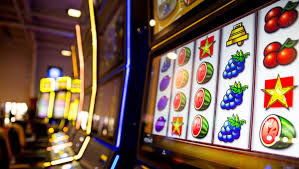
The Psychology of Slot Machine Design and Player Engagement
Flashing lights, cheery tunes and hollow promises of bountiful payouts lure players to slot machines, moth-like, into the mathematical delirium of dodgy stats that lie just beneath their garish suface trappings.
Shaping works by approximating but never quite reaching the desired goals through scattering frequent payoffs. Shaping employs near misses or losses that feel like wins to create the illusion of momentum, increasing players’ expectations of a final win in the process. Small wins create a feeling of momentum towards bigger payoffs, feeding players’ hopes for an eventual win.
The Illusion of Control
Flashing lights and seductive sounds in slot machines promise instant gratification, and the allure of big payouts. Beneath the gaudy graphics and gameplay stimulation, however, lies an elaborate science: the marriage of psychology, game design and player behaviour studies to keep gamblers playing longer.
But another critical feature, what computer scientists call the illusion-of-control, is an integral element of human psychology that game designers exploit in the architecture and mechanic workings of their machines to act as positive reinforcement for continued playing. The Hold and Nudge (spin) buttons give the player the power to influence the fall of the reels, to appear to cause something to happen, on each and every spin. The positive reinforcement that comes from the Hold feature is designed intentionally to keep the player continuously playing.
Variable reward schedules constitute illusions of control: they randomly distribute prizes to players only at some ‘reinforcement interval’. This randomness maximally activates players’ brain reward systems, for an enhanced, highly engaging experience designed to hold players in the game.
The Near-Miss Effect
Contemporary slot machines are far more than mechanisms for randomness, flashing lights and soundtrack celebration to balance players’ negative emotions and reinforce positive ones. There is, in fact, a sophisticated science to their design: player behaviour and engagement can be manipulated using pieces of metal or code – with the near-miss effect, for example, where actual winning combinations fall just short leaving players eager for another spin.
Researchers run these experiments to study the phenomenon; to understand what its characteristics might be. They look at the nature of the feedback provided during play – visual and audio, text-based and graphical. And across all studies, they found the response that might remain consistent: psychological, behavioural and neurobiological. Basically, they found that how the game presents to its players the feedback it receives is part of what makes players play the way they do when they get near misses.
The Gambler’s Fallacy
Flashing lights and seductive noises draw us into slot machines, enticing us to sit down and play. While casino slot machines certainly aren’t the only electronic gambling machines leeching cash from people’s wallets, they are some of the easiest to study, as well as some of the most seductive. A slot machine is a mediated experience, where the simple act of gaming is transformed, through a complex mix of technology and psychology, into an experience of heightened engagement – one that keeps a person on the stool, flipping the arm, for longer than they might have played other games of pure luck.
One way that they do this is by preying upon a phenomenon called the gambler’s fallacy – the belief that natural processes have a ‘memory’, so that outcomes in the future are affected by what’s happened in the past. Among the pricey tricks is a way to exploit this phenomenon by placing jackpot totals prominently on machines so that players think they are ‘due’ to win!
Not surprisingly, casinos exploit the gambler’s fallacy by paying out small sums frequently, so that players experience success quickly and stay interested – and also pay out less frequently, but more lavishly to excite players with the possibility of the big wins. The above process is extremely adept at predisposing players to addictive behaviour. Thus, when gambling, it is important for players to take conscious note of such psychological influences, and learn to set themselves time limits and spending limits.
Positive Reinforcement
Even though players are unaware of it, every spin of the virtual reels of a slots machine is a skilful amalgamation of psychological theories that engage a player’s’ sensory, emotional, behavioural and cognitive functions to pull players into the gaming session and ensure that they continue their play for longer than they might have intended. When psychologists’ insights into player behaviour during game play are understood and applied by game designers, players benefit in that the responsible gaming interventions embedded in the game ensure that they stay in control of their leisure activity while limiting the risk of developing a gambling problem.
Shaping comes in the form of operant conditioning: when a system reinforces an animal’s target behaviour by rewarding it by moving step-by-step closer and closer to a goal. Near misses can click on brain reward pathways Genting is no different, activating the chance-based reinforcement mechanism known as shaping: a phenomena in which near misses – spins on slot machines that tease a win but fall just short to keep you in the game – can click on brain reward pathways to create an illusion of control.
These features of contemporary gambling products serve as further forms of positive reinforcement layered on those derived from game-play, by immersing the player in a comparative social experience (in the case of leaderboards), as well as a multiplayer dimension (when joining a ‘room’). Meanwhile, the narrative structure of contemporary gambling games encourages players to incorporate explicit moral or semi-narrative structures into their play experience as they enfold themselves into the game, even as the game continues to enfold itself around the player.





